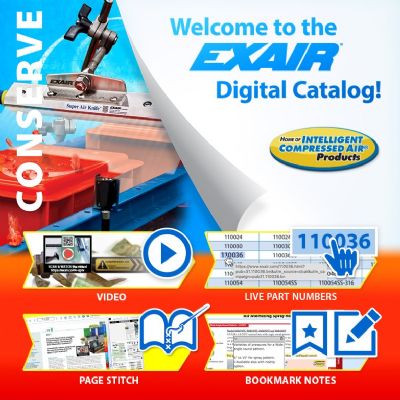Let’s begin with patented parts. To be sure, legal-enforcement mechanisms are in place to curb the illegal trading of patent-protected parts, though even here questions exist. There will be significant challenges identifying patent infringers as online trading of files occurs, as well as challenges in applying traditional theories of direct, induced and contributory infringement in the new digital ecosystem. Moreover, a setback for patent rights-holders recently occurred in ClearCorrect Operating, LLC v. Int’l Trade Comm’n, a decision issued by the U.S. Court of Appeals for the Federal Circuit on November 10, 2015.
In ClearCorrect, the Federal Circuit held that the jurisdiction of the International Trade Commission (ITC) does not extend to electronically transmitted digital data. The ITC initially blocked the importation of digital files that would permit operators of U.S. 3D-printing facilities to manufacture dental braces that infringed the patents on the Invisalign brand of clear braces. The Federal Circuit overturned that decision, ruling that under U.S.C. section 1337(a), the statute governing the ITC, jurisdiction extends only to “articles,” which the Federal Circuit interprets as material and tangible things. Therefore, the ITC’s jurisdiction does not extend to digital files imported into the United States that are useful for 3D printing of patentable articles.
The notion that 3D model files or blueprints may themselves not be patentable subject matter impedes rights-holders from pursuing free-riding behavior in the world of things, the same kind of behavior that decimated the recorded music business post-Napster. However, the dissenting opinion from Judge Newman in ClearCorrect suggests that the Federal Circuit’s opinion will not be the end of the story. Moreover, the Federal Circuit’s ClearCorrect holding only affects ITC investigations and not infringement actions in the federal courts.
Copyright Law’s Conceptual Separability Test
|
Experience Foreshadows Coming Challenges in 3D Printing
Mark Avsec has a unique perspective on what will happen to traditional manufacturing, and the consumer- and industrial-products businesses as 3D printing proliferates. Before becoming a lawyer, he earned a living for 20 years as a studio musician, producer and songwriter, writing more than 500 songs and producing or performing on more than 35 albums for, among other artists, Carlos Santana (“Angel Love”), Bon Jovi (“She Don’t Know Me”), Donnie Iris (“Ah! Leah!” and “Love Is Like A Rock”), Mason Ruffner (“Gypsy Blood”) and Wild Cherry (“Play That Funky Music, White Boy”). Avsec is a witness to what happened to the recorded music industry as the result of digitization.
“Revenues have plummeted since Napster first appeared on the scene and Shawn Fanning leveraged the Internet, MP3 technology and the unprotected CD,” he says. “Unlicensed file-sharing of copyright-protected music files was illegal, but the law could not stop it. People lost their jobs. As a result, the 21st century clearly is not about selling pieces of plastic to people; that was the 20th-century paradigm.
“Since Napster, I have practiced as an intellectual-property attorney in a region of the country that was built on manufacturing,” he continues. “When I read just a few years ago about 3D printing for the first time, I recognized that manufacturers, consumer-products and industrial-products businesses (my clients) would experience the same sort of massive disruption that the music industry had experienced.”
Because the technology would change its clients’ businesses, Avsec’s firm, Benesch, has formed a 3D Printing Industry Group, a multidisciplinary team led by core members of the firm’s Innovations, Information Technology & Intellectual (3iP) Property Group.
|
Most replacement and spare parts are not applicable to patent protection anyway, but software, such as a CAD file of the very same part, is. So, can you leverage copyright law to curb unwanted file-sharing of your products’ digital files? The fact is that enforceability questions exist in the copyright arena, too. For copyright protection to apply to a CAD file, how much of a role must a person (rather than a scanning machine) play in the design or creation of the file? A modicum of creativity is required for copyright protection to attach to a digital blueprint. More fundamentally, is the metal replacement part that is the subject of the CAD file an expressive article (capable of copyright protection) or merely a useful/functional article (not capable of such protection)? Most replacement parts are merely functional. Only nonfunctional objects and their CAD files clearly are subject to copyright protection. This makes copyright law largely irrelevant for the protection of replacement parts except for clearly non-functional parts or in instances where parts have both functional and expressive features.
Varsity Brands—A ‘Hybrid’ Case
As to the hybrid cases, in May, 2016, the U.S. Supreme Court granted a petition for writ of certiorari to clarify an important test: How is copyright protection applied to articles that are “mixed,” i.e., that are functional and have expressive features? The case is Varsity Brands, Inc. v. Star Athletica, LLC, 799 F.3d 468 (6th Cir. 2015), which concerns the copyrightability of articles of clothing, which are useful and functional (in this case, cheerleader uniforms). Under the Copyright Act, a “useful article” such as a dress or cheerleader’s uniform (or other useful articles such as replacement parts for airplanes, automobiles or other big machines) fundamentally cannot be copyrighted. However, a useful article’s expressive features may be protected if they can be “identified separately from, and…existing independently of the utilitarian aspects of the article.”
What is the appropriate test to determine when a feature of a useful article is protectable under § 101 of the Copyright Act? It seems that the Supreme Court will provide an answer, perhaps later this year or early in 2017. In addition to providing clarification for the apparel industry, a predictable test for conceptual separability is important for the growth of the 3D-printing industry.
Pirate Bay, the notorious torrent site that has traded music and movie files for years, is now trading files in a whole new category: Physibles, i.e., 3D files for 3D printing. Established companies such as Shapeways and Thingiverse host thousands of 3D digital models for a variety of articles, sometimes only expressive and sometimes only useful—but often a mix of everything in between. Can the Copyright Act be leveraged by the owner of the design of a lamp to demand that Shapeways (through a DMCA take-down notice) take it down and its displayed 2D photo/rendering? (Assume that the lamp was scanned and posted by a third party to the Shapeways site without the owner’s permission.) Yes, if the lamp itself is protected by copyright law. We know that a basic no-frills lamp would not be protected by the Copyright Act. We know that a lamp as expressive as the famous “leg lamp” in the “Christmas Story” movie would be protected by the Copyright Act. And, as for the myriad of lamp styles that fall along the continuum in between, it gets blurry. As succinctly stated in Shapeways’ amicus brief in support of Star Athletica’s petition, “Shapeways and its users will often be called on to navigate the landscape of conceptual separability and would benefit from the certainty and clarity of a single test.”
3D Metal Printing and the Future of Digital Commerce
Gartner analysts predict that by 2018, $100 billion per year in intellectual-property losses will be attributable to 3D printing. Particularly vulnerable are the spare- or replacement-parts industries. To mitigate such threats, notwithstanding the challenges, legal precautions should be considered. These include trade dress, patent claiming and copyright strategies to protect against infringement in the digital realm. In addition, certain trademark-validation features could be incorporated in the materials themselves.
But whether or not your part is protected by a patent, copyright, trade dress or nothing at all, think about licensing. The music industry did not effectively leverage a digital marketplace until Steve Jobs developed an elegant store for digital products. In the industrial marketplace, certain customers will pay a premium to license the OEM’s genuine, branded CAD files for metal replacement parts. This is a strategy that may yield lower per-unit revenue (an OEM could not charge as much for a license as for the physical part), but more profit overall. And, after all, only the OEM can verify safety and quality, and maintain the warranty on a big machine. Only the OEM can market the blueprint under its brand, the official OEM trademark, which connotes a guarantee of quality.
If you are a manufacturing company that derives significant revenue from replacement parts, you should be talking to your legal advisors and evaluate:
1) What sorts of patent, copyright and trademark strategies your company should employ today, if any; and
2) What a licensing strategy for your company might look like.
Do not delay or deny the threat posed by the coming digitization that may affect your business. That is what the music industry initially did in response to massive file-sharing; delay and denial was not efficacious and suing customers did not work. Instead, consider, if appropriate for your business, a licensing strategy as your opportunity, which is what the music industry finally embraced. In any case, there should be a bullet in your business’s strategic plan every year: What are we doing in additive? 3DMP
Technologies:
 Mark Avsec
Mark Avsec What can the music industry teach OEMs if they want to keep selling replacement parts after 3D printing takes hold? Get into the licensing game.
What can the music industry teach OEMs if they want to keep selling replacement parts after 3D printing takes hold? Get into the licensing game. 







